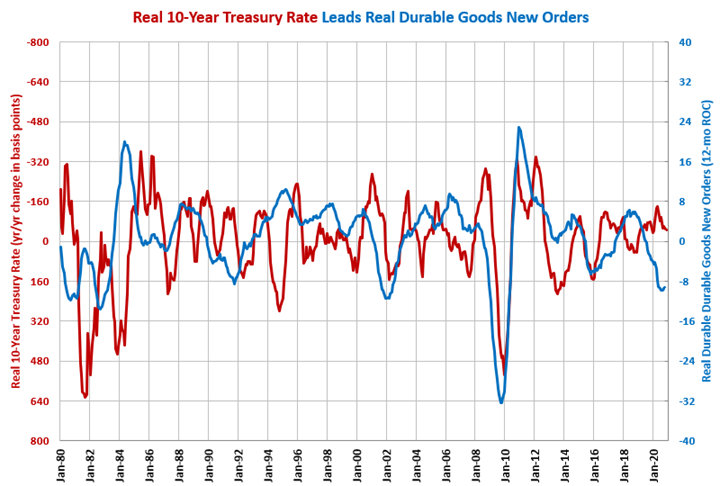10-Year Treasury Rate Creeps Higher
The change in the 10-yr Treasury was at its highest level since January. A less negative change in the real rate is less stimulating to the economy, which is not what the Federal Reserve wants right now.
In November, the nominal 10-year Treasury rate was 0.87%, which was the highest the rate had been since February. However, this is still very near the lowest rate ever. It was the ninth month in a row and the ninth month ever that the monthly average was below 1%.
The real 10-year Treasury rate, which is the nominal rate minus the rate of inflation, was -0.44%. This was the 11th consecutive month and 14th of the last 16 that the real rate was negative. However, the rate was grinding slowly higher since April. November’s real rate was the highest since January.
In October, the year-over-year change in the real rate was -47 basis points. The change was negative for the 23rd month in a row. The change was at its highest level since January. Since April, the trend in the year-over-year change in the real 10-year Treasury was less negative. A less negative change in the real rate is less stimulating to the economy, which is not what the Federal Reserve wants right now.
As much as the absolute level of interest rates, it is the relative change in interest rates that drives additional borrowing and spending. A falling change in the real 10-year Treasury rate tends to be a positive signal for durable goods manufacturing. Rising changes in the real 10-year Treasury rate tend to lead to contraction in durable goods new orders and capital equipment consumption by a relatively long period of time – historically, between 12 and 24 months. The rising change in the 10-year Treasury rate is a good leading indicator of contraction in housing permits, construction spending and consumer durable-goods spending as well.





.JPG;width=70;height=70;mode=crop)
